The Baobab: Ancient sentinel of the Delta
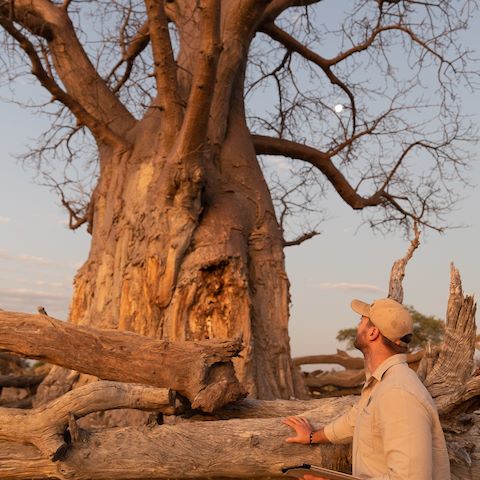
With its unmistakable silhouette and remarkable resilience, the baobab tree is one of Africa’s most iconic species. Old and gnarled, their spongy interiors bloat and bulge as time passes and the environment changes around them.
Those with a botanical interest may know it as Adansonia digitata; others may know it as Tree of Life, the dead-rat tree, the monkey-bread tree or perhaps the upside-down tree. In Botswana, it is called mowana.
Baobabs can live for thousands of years, storing vast amounts of water in their swollen trunks to withstand the harshest droughts. Their bark is fire-resistant, and their fibrous wood can regenerate even after significant damage. Baobabs play a vital role in their ecosystem, providing food and shelter to a multitude of species, from fruit bats to elephants.
Beyond their ecological importance, baobabs hold deep cultural and spiritual significance for many African communities. They are often sites of worship, gathering places for storytelling, and sources of traditional medicine. The trees’ fruit, known as monkey bread, is highly nutritious, rich in vitamin C, and has been used for centuries as food and medicine.
Baobab conservation in the Okavango Delta
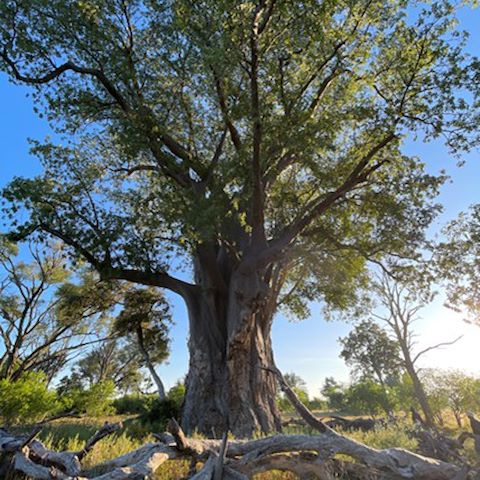
Despite their resilience, baobabs face increasing threats. Climate change, habitat degradation, and damage from elephants seeking moisture from their trunks all take a toll.
While baobabs have the rare ability to grow new bark over damaged parts of the trunk, too much damage can cause the tree to die, as it weakens from the loss of water, making it susceptible to disease and drought.
Recognising the urgency of protecting these ancient trees, Wilderness has launched a baobab planting and preservation initiative in the Okavango Delta, with focused efforts at Mombo.
Bringing baobabs back: A Wilderness initiative
Some conservation initiatives begin with data. Others start with a vision. This one was sparked by the deep admiration of a devoted Wilderness guest.
Mombo guest Francesca Secondari has spent years traveling in Botswana forging a profound connection with the country, its landscapes and its wildlife. On one of her extended stays at Mombo, she began inspecting each baobab closely. Rather than simply observing their decline, she saw an opportunity to act.
What began as a personal commitment has grown into a dynamic conservation initiative. Today, Twenty-seven sub adult trees are now protected at Mombo, with several new saplings also under protection.
But how does one protect such a prize from the world’s largest land animal? At Mombo, log piles sourced from trees that have died naturally are placed around the baobabs, creating an impermeable barrier to elephants. Another method is to wrap chicken-wire mesh around damaged parts of the trees to allow for the bark to recover and regrow.
The project is a collaborative effort involving researchers, conservationists, guests and local communities. One of the key strategies is recording data to track each tree. “The idea is to build a database for each tree, including its name, location, health status and significance. Some of them have historical or cultural importance – like the ones at Mombo, which guides use as reference points, often with stories attached to them”, explains Wesley Hartmann, Botswana Head of Conservation & Environmental Operations.
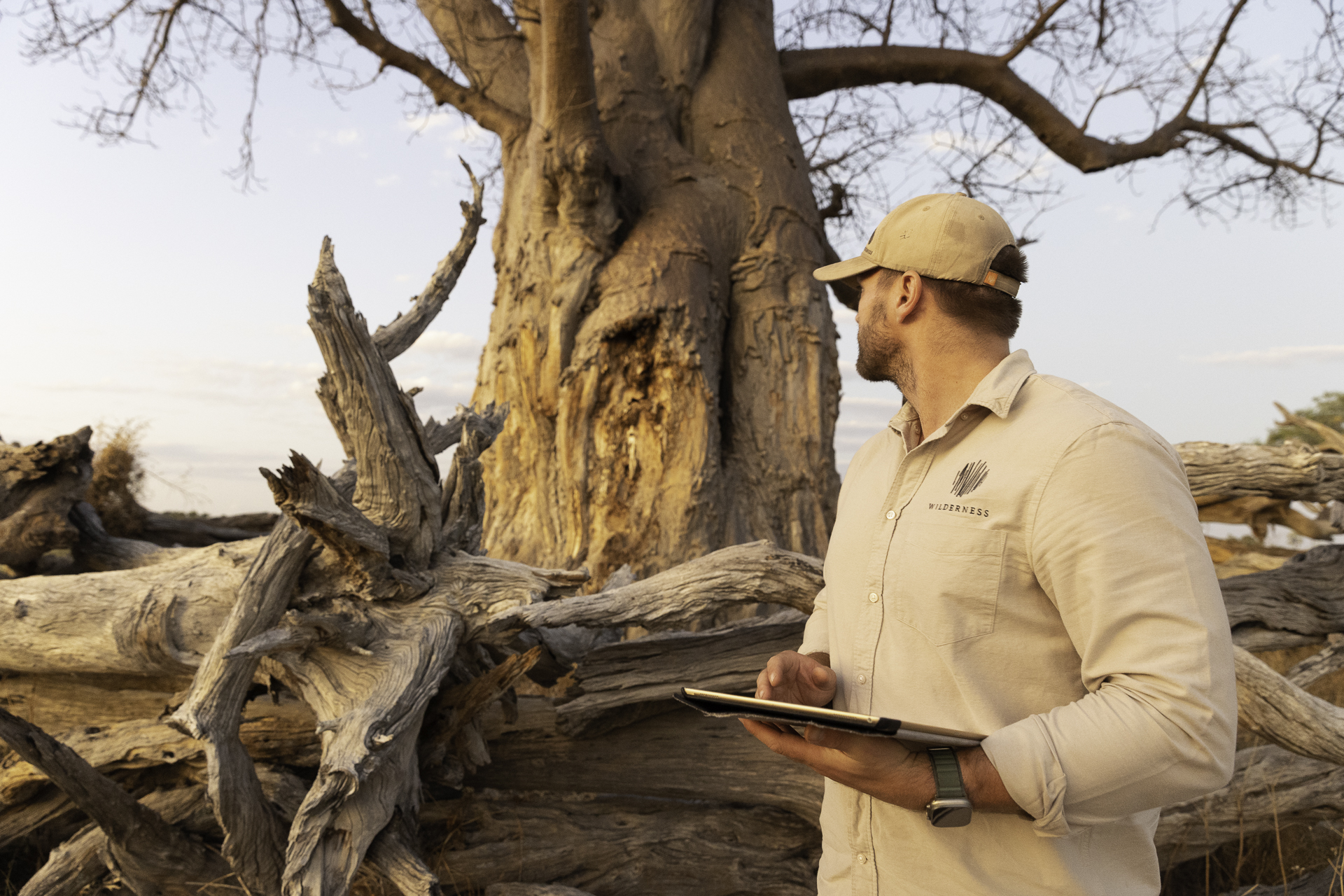
A critical component of the project is tree protection. “Our partners in the Jao and Chitabe concessions are on board, and they’re each taking their own approach. They’re using chicken wire mesh to protect their baobabs, planting and protecting new saplings. The plan is to assess how many trees are protected, evaluate their condition, and add them to the database”, adds Wesley.
In the Jao concession alone, a total of thirty-seven baobabs are under protection. At Chitabe, ten baobabs are protected; eight within the fenced camp grounds and staff village, and two out in the wild. Where these trees are protected, they thrive.
In December 2024, more baobab saplings were planted at Mombo as well as in other Wilderness concessions in Botswana.
“We planted three new saplings with Francesca and her partner, another two later in the year as part of our Christmas for Conservation initiative, and there are plans to plant many more,” says Wesley. Three new saplings were planted at Vumbura, and four were planted in the Linyanti concession. “When driving past, you might see these large log pile fences seemingly protecting nothing. But take the time to stop and peer inside – with your guides permission of course – and you’ll see a small unassuming tree being given the best shot at surviving”, explains Wesley.
Beyond conservation, there’s also a guest engagement element. “We’d love to offer guests the opportunity to plant a baobab in honour of a loved one, an anniversary, or another special occasion. This comes with a donation to the Wilderness Trust, which in turn helps us continue caring for these trees”.
A long-term commitment to conservation
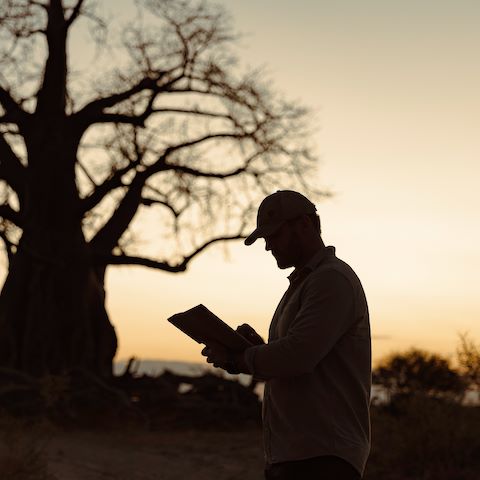
When it comes to baobabs, there is no short-term. These ancient trees take decades to bear fruit. “A young baobab is one of the rarest sightings you’ll have on safari!” says Wesley.
The long-term goal is to introduce “Baobab Drives”. These dedicated drives will highlight key baobab locations while offering guests a chance to experience the dynamic landscapes of the Okavango Delta. “At Mombo, game drives already include incredible wildlife sightings, thanks to the expertise of our guides. But when we were checking the status of the baobab enclosures with Francesca, we ended up creating these large loops covering the entire Mombo area of operation. Along the way, we naturally bumped into lions or leopards, but the diversity of landscapes is truly amazing. It felt like every corner we turned we were in a different habitat!”
Tree sourcing is also an integral part of the initiative. “We source all our trees locally from nursery suppliers in Maun. The saplings we planted over Christmas were bought from local nurseries – we drove deep into one of the nearby villages to pick them up. I remember arriving at someone’s home, and seeing these tiny trees. The saplings have smooth bark and slender stems and so look very different to the huge giants that they can become. I found myself asking, ‘Is that really a baobab?’ But yes, every sapling we’ve purchased so far has come from local nurseries in Maun”, explains Wesley.
A future for baobabs
Baobabs have stood as silent sentinels over Africa’s landscapes for millennia. Thanks to dedicated conservation efforts, these iconic trees will continue to thrive in the Okavango Delta.
Wesley recalls a moment that highlights the importance of these efforts: “When I was working in Malawi, we had a day where guides brought their children into camp. I’ll never forget one little girl, wide-eyed with amazement, saying, ‘One day, people will come to see the trees, not just the animals’. In Malawi, so many trees are cut down for firewood and charcoal”.
In Botswana, baobabs are more than just part of the landscape. They are history, culture, and life itself. It’s our responsibility to protect them.
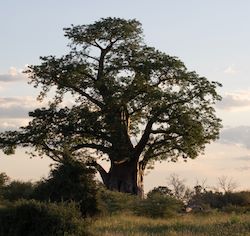

Let’s plan your next journey
Ready?
When we say we’re there every step of the way, we mean it, literally. From planning the perfect circuit, to private inter-camp transfers on Wilderness Air, and easing you through Customs. We’re with you on the ground, at your side, 24-7, from start to finish. Ready to take the road less travelled? Contact our Travel Designers to plan an unforgettable journey.